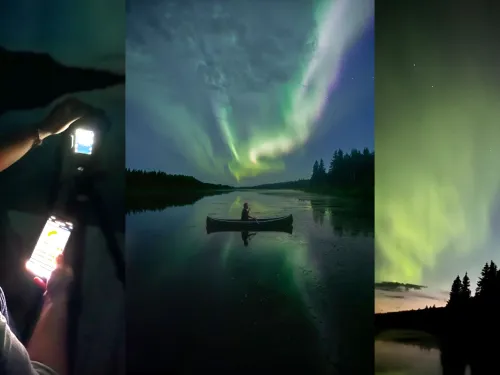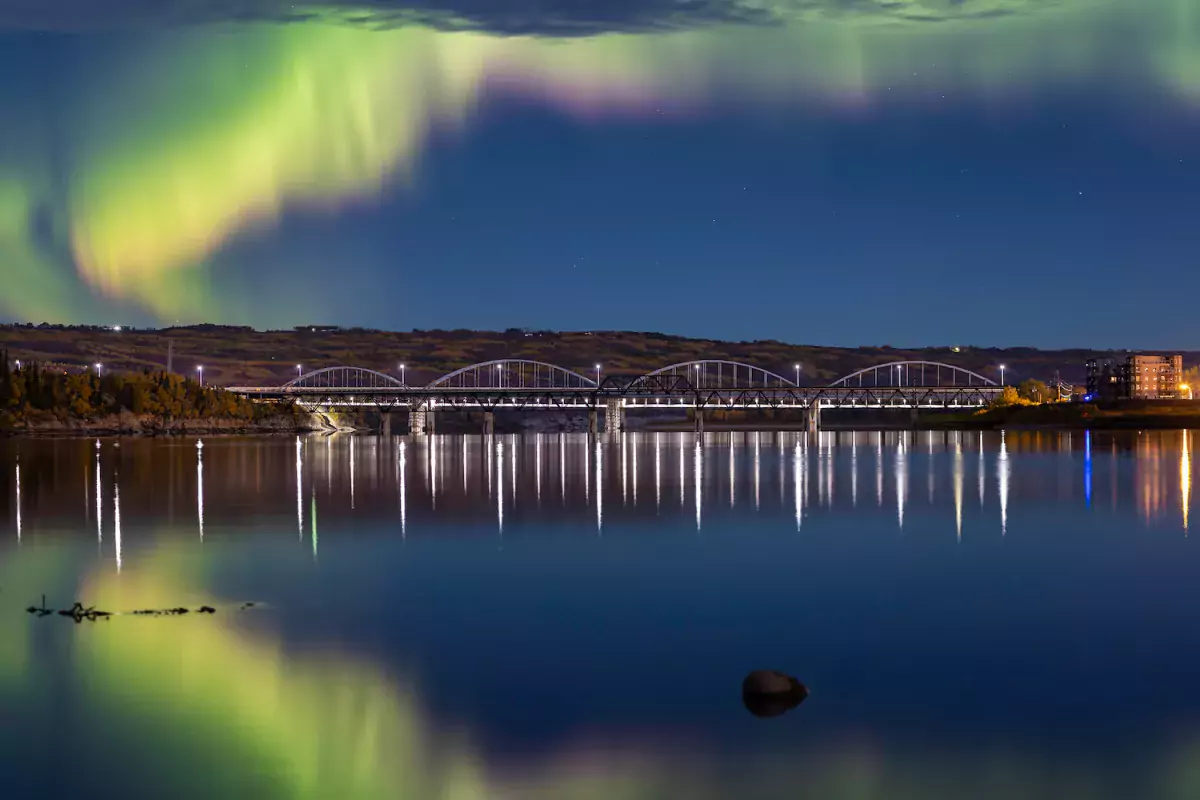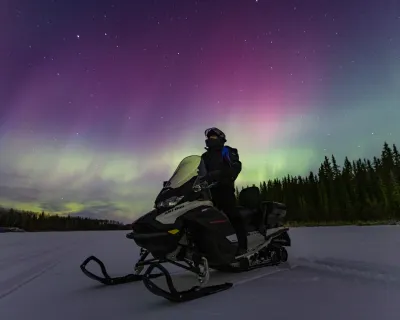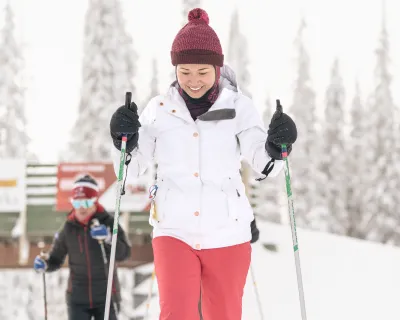Aurora photography tips from ZenSeekers photographers
Few natural phenomena are as visually impressive as the northern lights, and at the same time, as elusive for photographers and skywatchers. The Aurora Borealis are not a permanent feature, like mountains or lakes, nor even a seasonal one like the larches in fall.
However, they are a more regular occurence in northern latitudes in places like Western Canada. (If you didn't catch our story on five top places in Western Canada to witness northern lights, that will help you zero in on some places to go.)
At ZenSeekers, we're lucky to work with some of the best photographers in Western Canada, and after reflecting on some of the scenes I've witnessed, I got curious about their tactics. So we asked them. For those inspired to try aurora photography yourself, here's a primer on the how of shooting northern lights, from a couple of our talented #SeekersAmbassador crew.
Tips for aurora photography
For budding photographers or those new to shooting northern lights, I asked two of our expert night shooters to give us their tips, from the gear to camera settings, to pre-shoot prep and little tricks you need to know.
Start with this video interview on #BTS aurora shooting, and then grab the specs below.
WATCH: Aurora photography: in conversation with Paul Lavoie
Take a behind the lens look at aurora photography, including personal tips from photograher Paul Lavoie.
In addition to Paul's insights, we also tapped in-house night photographer Madeline Williams for her insights. Here are both their takes on some of the key things to know for getting into night sky photography.
Madeline Williams
What do I use to get the shots? Full frame Nikon D610 with a wide angle lens (my go to for the past 10 years has been a prime 28mm, F1.8) with the ability to open the aperture wide open, and a solid tripod
Photo settings
I start with a shutter speed of 15 second-long exposure and an aperture in the range of 1.8 ISO : 1600, then adjust as needed from there
Top tip: bring a headlamp that has red light on it. This makes it less harsh on your eyes every time you turn a light on and have to adjust back to dark.
Night photography, aurora or just the starry sky, for me is a lot of trial and error. You can't always see exactly what is going to be in your frame, so I'll take a shot and adjust from there. The focus at a 1.8 aperture can also be super tricky to get perfect, and without the ability to auto focus, it can take a few tries to get it right.
Get outdoors, get more connected, get more Zen.
Sign up for ZenSeekers enews for more transformative travel inspiration.
Paul Lavoie
What do I use to get the shots? Canon R5 with a 16-35mm, F2.8 wide angle lens, with a tripod.
Photo settings
I typically will do my first shots any where from 10-20 second exposures at ISO 1600-2500 depending how intense the Aurora is. Ideally trying to land in the 6-10 second exposure area. Anything over 15 seconds you will start to loose detail in the northern lights.
With the newer cameras its easier to shoot at higher ISOs and not fear the camera noise. The biggest issue most people struggle with in night photography is: there Is NO autofocus!
Top tip: one trick I have that I’ve used countless times when I was first starting is..
- Go out in the daytime and find the furthest thing you see in the distance.
- Autofocus on that subject.
- Once it's focused switch lens to ‘Manual Focus’ and DONT TOUCH IT!! (I would even use gaff tape on the lens so it doesn’t shift out of position.)
With that, you should be all set! Happy Chasing!!
How to see aurora
Obviously, aurora are weather dependent, so there's no guarantee you'll see them on a given night. Even when solar activity makes northern lights a likely possibility, you need darkness and clear skies.
To track aurora activity, Paul recommends the Facebook group Alberta Aurora Chasers and the app Space Weather Live to track what's happening in the sky.
You can also sign up for alerts on Aurora Watch, to get notifications straight to your phone when the northern lights are going to pop.
Looking to combine some winter adventure and northern lights? Check out all the adventures covered on SnowSeekers' #SkiNorthAB expedition.
After that, you'll want to pack your gear and get ready for the show.
For more photo inspo
Get deets on where to start your photo explorations, with these Zen features.
Like Our Facebook Page







